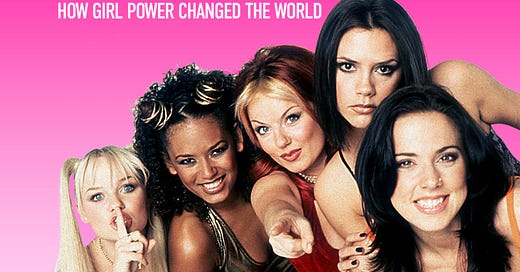The History of Dark Art PLUS The Weightlessness of Cyberspace PLUS Face: The Final Frontier
The History of Dark Art
Flash Art is keeping the flame going for the downtown Manhattan fringe movement. As it should. For now, it is the most fecund art movement to attain any visibility in our post-algorithmic universe. But, as I’ve said before, this dark, reactionary type of art is unsustainable. Eventually, critics and audiences want sunshine and glitter. The beatniks, like the fringe movement of today, were primarily a literary New York scene. Even the beatniks that stayed in San Francisco were understood to do so because they could not handle the pressure of the NY publishing world. Though there were many similarities between the beatniks and the hippies they reluctantly spawned, a major difference was that, while the hippies danced in the park like whirling dervishes in the ecstatic trance of LSD, beatniks preferred weed, strong coffee and screaming poems into microphones about heroin. In some ways, you might argue that the beatnik artistic phenomenon was intellectually superior to the hippie scene, but no one will deny that the sunshine supermen had a greater impact.
In the ‘70s, metal and, later, punk, were forged in the fires of the anti-hippie backlash. Though metal and punk had quite a few differences, one major commonality was the aggressive sound that was scary to some. This was no dance in the park. While punk succeeded in the UK, in the US it bombed. The Vietnam war ended and Americans preferred to live in the real life glittery movie musical that disco offered. Metal had more success stateside, but in the ‘80s that (d)evolved into nothing-but-a-good-time hair metal about fast cars and faster women.
As a tail-end Gen Xer, I remember being a teenager who indulged in angsty grunge about suicide and heroin as well as nihilistic gangsta rap. After 1995 and the thrill of the Internet, the mood changed. Rap got flashy and sexy, like a macho disco, and electronica took care of the rest. To say nothing of course about boy bands and girl power.
With a looming recession and AI job (possible human) displacement fears, I doubt that pouty heroin-chic reactionary irony will still be IT.
The Weightlessness of Cyberspace
This week Zine was about how marketers hitch their wagons to online trends that are big and fast but have no weight. Using the classic physics example of how a balloon and a bowling ball may be the same size, but one weighs way more, Zine writer Matt Klein deftly explains how much of our current online climate is supported by huge, fast balloons that are all too easy to pop.
For years, this was the story of pop culture. A hit parade full of fluff about love and the stars in the sky. It reached its nadir in the early ‘60s. Against this backdrop came Bob Dylan, the Beatles and the Stones, adding so much more weight and depth to the radio. It was difficult to replicate all that depth and weight, so Dylan’s style got diluted to the increasingly vapid singer-songwriter genre of the ‘70s. The Beatles were replaced by boy band after boy band with less and less designs on innovation or artistic relevance.
Ted Gioia seems optimistic about online substance:
[H]uman beings really aren’t like rats. In the short term, you can manipulate them with Skinnerian systems of reinforcement. But over the long run, humans will do something the rats never do—they rebel.
[…]By the way, that’s why Substack is flourishing. That’s why long podcasts are so popular.
Substack laid off 14% of its company. NPR is cancelling podcasts. Meanwhile, TikTok remains the only tech platform that is not shrinking. It’s so big Congress needs to take it down. Tempting though it is to blame TikTok for the weightlessness of cyberspace, the truth is drama and depth will never work online. Everything gets compressed online. Bowling balls move too slow. By necessity, the Internet needs fast balloons. Even with the current AI hype, what actually went viral? A silly digital Seinfeld ripoff, deepfake videos of Biden vaping loud and playing Fortnite and a “photo” of Trump getting arrested that, as soon as people realized it was fake, became a source of lulz.
Even serious movements like wokeness and antiwokeness can only have so much gravity. In the only article on wokeness worth reading in the wake of Wokegate, Sam Kriss correctly discerns that wokeness does not have a concrete political philosophy animating it. Rather, it is a vague etiquette guide that gets updated daily, like a work email from HR. And when the latest wokeware update goes out, it is never something with substance that is weighed heavily. It is more like a lightweight trend meant to give influencers new tools to show how much more enlightened they are. Antiwokeness is not the solution. Arguably it’s more lightweight, centered around a very simple attitude of insouciance.
As AI takes over more and more of the web, it will be wise to remember that much of what we experience online is from a bot. For now, there are worse heuristics to use than this: most of what we experience online is for entertainment purposes only.
Face: The Final Frontier
There are too many examples on this blog to count of my pessimism of the AI future. (There was one moment of optimism that I regret now but I keep up for entertainment purposes anyway). There may be a glimmer of hope though. Chat GPT has become a popular alternative to Google for search, but it seems like TikTok is still the fastest growing search alternative. Drew Austin chalks it up to human faces feeling more personal than the coldness of Google or the new and improved Bing.
Jacob Ward’s excellent book The Loop: How Technology Is Creating a World Without Choices and How to Fight Back is centered around how technology exploits the automatic, unconscious processes of our brains to guide it towards decisions that favor the platform and the advertisers that support it. Today’s Stay Grounded demonstrates how even the current wave of AI tricks our unconscious brains into thinking that the AI itself is conscious. Thus far AI has exceeded expectations with written words, spoken voice and even pictures. But how long will it take AI to make videos that replicate a person looking into a camera and talking?
Deepfakes are often brought up as a response but let’s look at what deepfakes are primarily modeled on: politicians and broadcasters. Most viral video deepfakes have been of people like Joe Biden and Joe Rogan. People like Biden and Rogan often speak while not moving around too much with a fixed background behind them. What about a teen with the Gen Z shake? Biden and Rogan also speak in professional, broadcast-friendly voices with emotions that seem well managed. In order for AI to get convincing deepfakes of more normal people (of the TikTok personalities that are currently providing stiff competition for Chat GPT in the search arena) it would need to find a way to act convincingly as well. Or at the very least it would require a skilled director to manipulate the voice and face in a convincing way. Too much work for now.
There is also the whole “uncanny valley” thing. AI may have bridged that gap with still images of synthetic human faces but I have yet to see a video of a synthetic person that isn’t eerie. And I would suspect that it will be a while before we get to that point because no language is older, more baked into our unconscious, than that of human expressiveness. It is directly inherited from our primate ancestors. Now of course when video or even synthetic live streams cross over the uncanny valley and we emotionally bond to AI faces, we will be completely and utterly screwed. We will have the opposite problem. The unconscious preference for human faces that may currently slow our descent into AI bedlam will be used against us when Big Tech gives us convincing synthetic faces that are always warm, kind and empathetic to us in the chat arena. But as it stands now, people prefer TikTok search because they like human faces and human expressiveness. And, like I asked last week, when TikTok gets banned, will ChatGPT make an adequate rebound?





